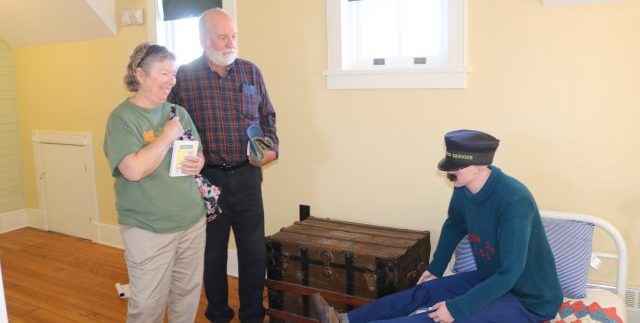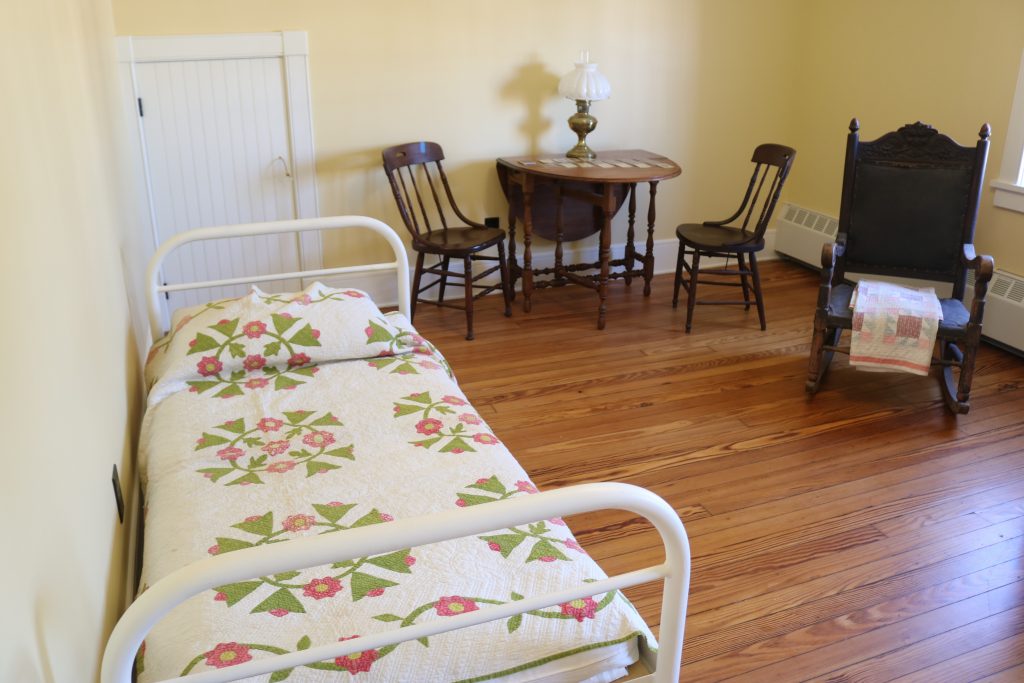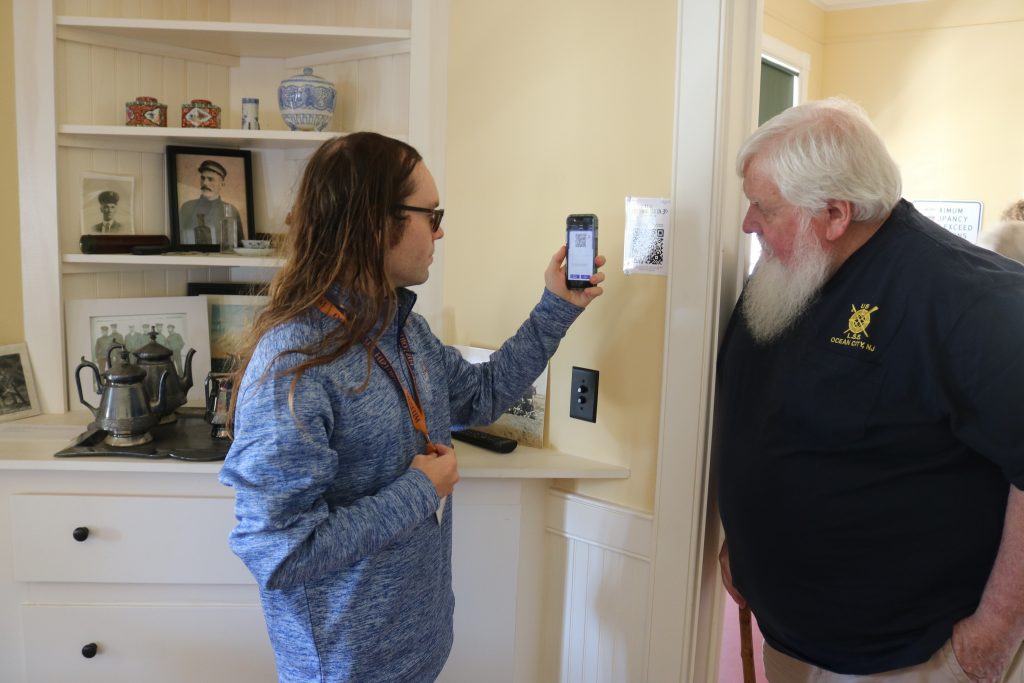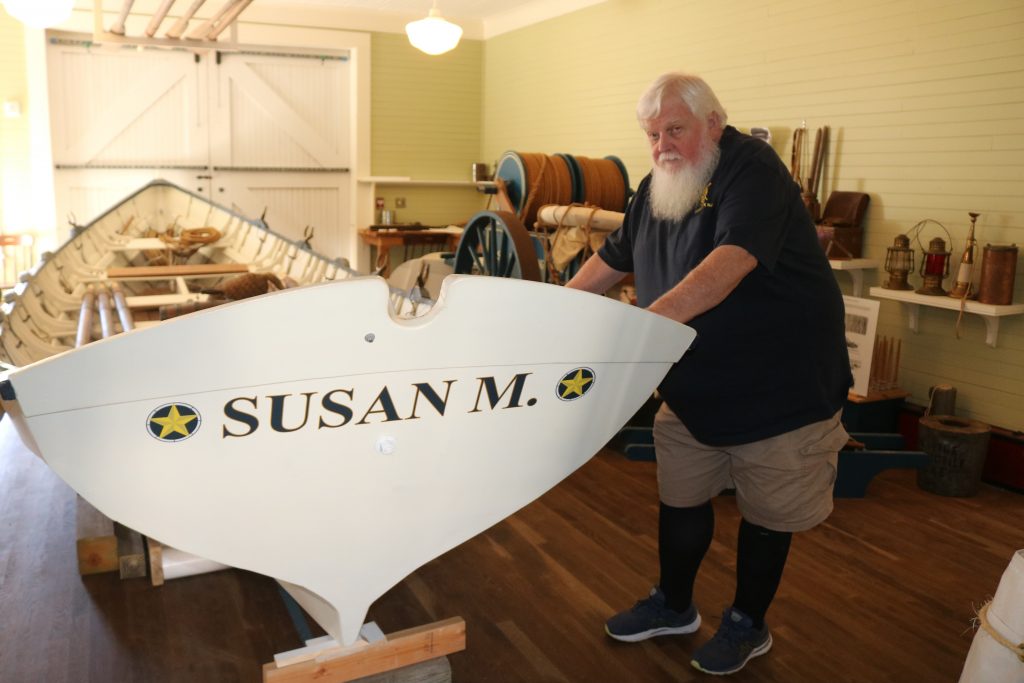Ocean City Life-Saving Station Shows Off New Renovations

By Donald Wittkowski, OCNJDAILY
Visitors walking up the stairs to the second floor of Ocean City’s U.S. Life-Saving Station museum are in store for a pleasant surprise.
They are greeted by “Charlie,” a mannequin who is sitting on one of the beds in what is an authentic re-creation of the bunk room that served as the spartan sleeping quarters for the “surf men” who worked at the station in the late 1800s and early 1900s.
Charlie isn’t much for conversation, but he is one of the centerpieces of much-awaited renovations to the second floor that were in full view to the public Saturday during the museum’s open house for the New Jersey Lighthouse Challenge tour.
“The second floor is in the process of being finished by the end of the season. We’ve got it about 90 percent done,” said John Loeper, a local historian who serves as chairman of the life-saving station.
The remaining 10 percent will include stocking the second floor with the types of clothes, coats and shoes that would have been worn by the surf men in those days, Loeper explained.
“They’re trying to keep it as close as possible,” Loeper said of the museum volunteers re-creating an authentic atmosphere for the bunk room.

The lightkeeper’s sleeping quarters on the second floor are part of the renovations.
Renovations on the second floor also include the lightkeeper’s room. The keeper was the man in charge of the station. Reflecting his high status, he had separate living quarters from the surf men he supervised.
The keeper’s room includes a modest bed, a rocking chair, an antique oil lamp sitting on top of a vintage dresser and a card table complete with old cards on top of it, seemingly ready to be played.
Charlie, meanwhile, is dressed in replica clothing that fits the period between 1885 and 1915, the life-saving station’s heyday. Loeper noted that the mannequin’s navy blue sweater, embroidered in red letters with the words, “Ocean City LSS,” was knitted by Pam Boyce, an expert seamstress who lives in Massachusetts.
The building itself, located at Fourth Street and Atlantic Avenue, dates to 1885 and is one of a few surviving examples of life-saving stations in the country. A forerunner to the U.S. Coast Guard, the U.S. Life-Saving Service was responsible for rescuing the passengers and crew from the many shipwrecks that occurred in the late 1800s and early 1900s in the busy shipping lanes along the East Coast.
When needed, the surf men would rush to the rescue of distressed or sinking ships. If one was spotted close to shore, they would frantically take action, either launching their lifeboats or deploying a rope-operated system to save the ship passengers and crew.

The U.S. Life-Saving Station is located at the corner of Fourth Street and Atlantic Avenue.
The museum is stocked with authentic examples or replicas of the boats and other life-saving equipment used by the surf men during their extremely dangerous job. It also depicts the late 1800s and early 1900s atmosphere of the life-saving station with vintage furniture and an array of other artifacts.
In a new feature, the museum combines its old-fashioned setting with new technology to educate visitors about the importance of the life-saving station. Each room includes a QR code that, once scanned with a cellphone, is linked to videos showing Loeper explaining the history and different features of the museum.
The QR code system has been developed for the museum by Ocean City High School student Ian Crowley as part of his Eagle Scout project, Loeper said. Ian is the son of Ocean City Councilman Terry Crowley Jr.
“This is the first blush,” Loeper said of the potential of the QR code for the museum. “This technology can be used as much as we want to use it.”
Visitors touring the museum Saturday as part of the New Jersey Lighthouse Challenge were able to use the QR code as they went from room to room.

Michael Cassidy, left, a staffer with the Ocean City Historical Museum, and John Loeper, chairman of the Ocean City Life-Saving Station, demonstrate how the new QR code system works in each room.
The annual event allows visitors to explore New Jersey’s historic lighthouses and related museums to help raise money for their preservation and restoration.
The lighthouse route covers the Atlantic Coast from Sandy Hook to Cape May and the Delaware Bay and River Coast from Cape May to Paulsboro.
Terry and James Denniston, Lighthouse Challenge aficionados who live in Manchester, N.J., planned to visit all of the lighthouses and museums that are part of the weekend tour. They got their first look Saturday at the renovations on the second floor of the Ocean City Life-Saving Station.
“It’s beautiful,” James said.
“It’s amazing,” Terry added. “It’s all so nicely done.”
The Dennistons, who are married, got a chance to meet Charlie when they climbed the stairs to the second floor. Hoping not to startle them, the museum’s volunteers told them about the mannequin before they headed upstairs.
“We knew there was a mannequin. But when I turned toward the room, I thought, ‘Oh, he’s right here,’” Terry said with a laugh.
For more information about the Ocean City Life-Saving Station, visit uslifesavingstation30.com.

John Loeper stands next to the type of surf boat that was used in shipwreck rescues.


